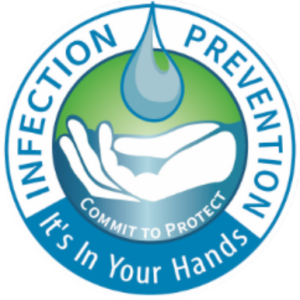COVID-19 is most likely to be introduced into a facility by visitors or health care personnel who are ill. Because some people infected with COVID-19 have no symptoms, they can unknowingly spread the virus even with screening. Since the beginning of the pandemic, long-term care facilities have been required to restrict entry of non-essential personnel (with only rare exceptions for compassionate care visits at end-of-life.) as every person allowed in increases the risk of infection for our highly susceptible residents and the staff who care for them.
While future visitation is expected in phases, criteria will vary by facility location and the circumstances unique to that community (such as current positivity rates and vaccination rates). Upon the easing of restrictions, visitors should expect new procedures, such as answering screening questions, temperature checks, and compliance with PPE requirements. Physical contact will be restricted in the initial phases of re-opening and visits will have to be scheduled to maintain compliance with sanitization requirements.
Cantex is staying abreast of all changes and accommodating re-opening as allowed.
Absolutely. We encourage such conversations and want to help make them happen. Just contact the staff leaders for the individual facility where your loved one lives, and they can make certain you get connected.
Our patients and residents love to receive letters and packages. All packages must be clearly labeled with the recipient’s name and left outside the front door where they will be collected and distributed by facility personnel.
As re-opening begins, visitation guidelines will vary widely depending on the facility’s location and the different state and/or local authorities each is subject to. Cantex is staying abreast of all changes and accommodating re-opening as allowed. Please contact your loved one’s facility directly for current information on their visitation status.
We take great pride in our quality of care during the best of times AND during the most challenging of times like now, with the presence of COVID-19.
We will also be contacting family members and residents’ representatives should a significant health care change in medical condition occur or should a loved one test positive for the virus.
Yes. All therapy is currently ongoing and is customized for each patient.
Since the onset of the virus last year, we have been implementing a thorough, in-depth, and detailed infection prevention and control plan specific to COVID-19. Our plan remains in place and our efforts to prevent the occurrence or spread of the virus in every facility remain our priority every single day. We are screening residents, patients, and employees for signs or symptoms of the virus multiple times a day and will extend that to any visitors as facilities are allowed to re-open.
Yes. Our supply resource, including for personal protective equipment (PPE), is strong. We are also continually assessing the situation on a facility-by-facility basis and responding as needed.
Absolutely. Our executive directors, resident/patient ambassadors, department heads, and others are continuing to provide telephone updates concerning COVID-19 in individual facilities.
When a positive case is identified, the resident or patient is typically moved within the facility to an isolation area specifically designed for COVID-19 residents and patients. This area is primarily staffed by designated employees who remain strictly in this part of the building. At all times, the individual medical needs of the COVID-19 residents and patients are being assessed.
People with COVID-19 have had a wide range of symptoms, ranging from mild to severe. Symptoms may appear two to 14 days after exposure. People with the following symptoms may have COVID-19:
- Fever or chills
- Cough
- Shortness of breath or difficulty breathing
- Fatigue
- Muscle or body aches
- Headache
- New loss of taste or smell
- Sore throat
- Congestion or runny nose
- Nausea or vomiting
- Diarrhea
People at high risk for developing severe COVID-19 include those who are 65 or older and have other high-risk conditions, such as chronic lung disease, moderate to severe asthma, heart conditions, and weakened immune systems. People of any age with severe obesity or certain underlying medical conditions (such as diabetes, renal failure, or liver disease, particularly if not controlled) might also be at risk.
Screening and testing are two of the most effective ways of preventing, detecting, and controlling diseases, including viruses like the novel coronavirus disease 2019 (COVID-19).
- Screening is used to detect the possibility of early disease risk or factors for disease in large groups of individuals, such as residents or other apparently virus-free individuals.
- Testing is used to establish the presence or absence of disease as treatment decisions are being made.
Staying connected
To connect with a loved one, contact their facility directly to schedule.


